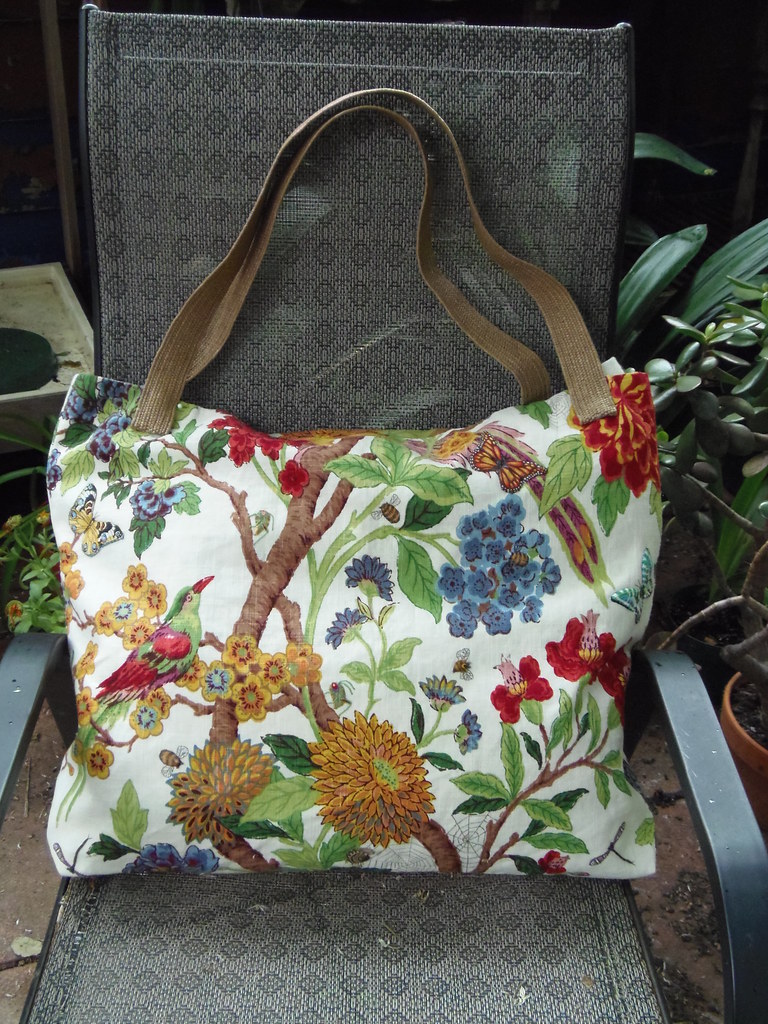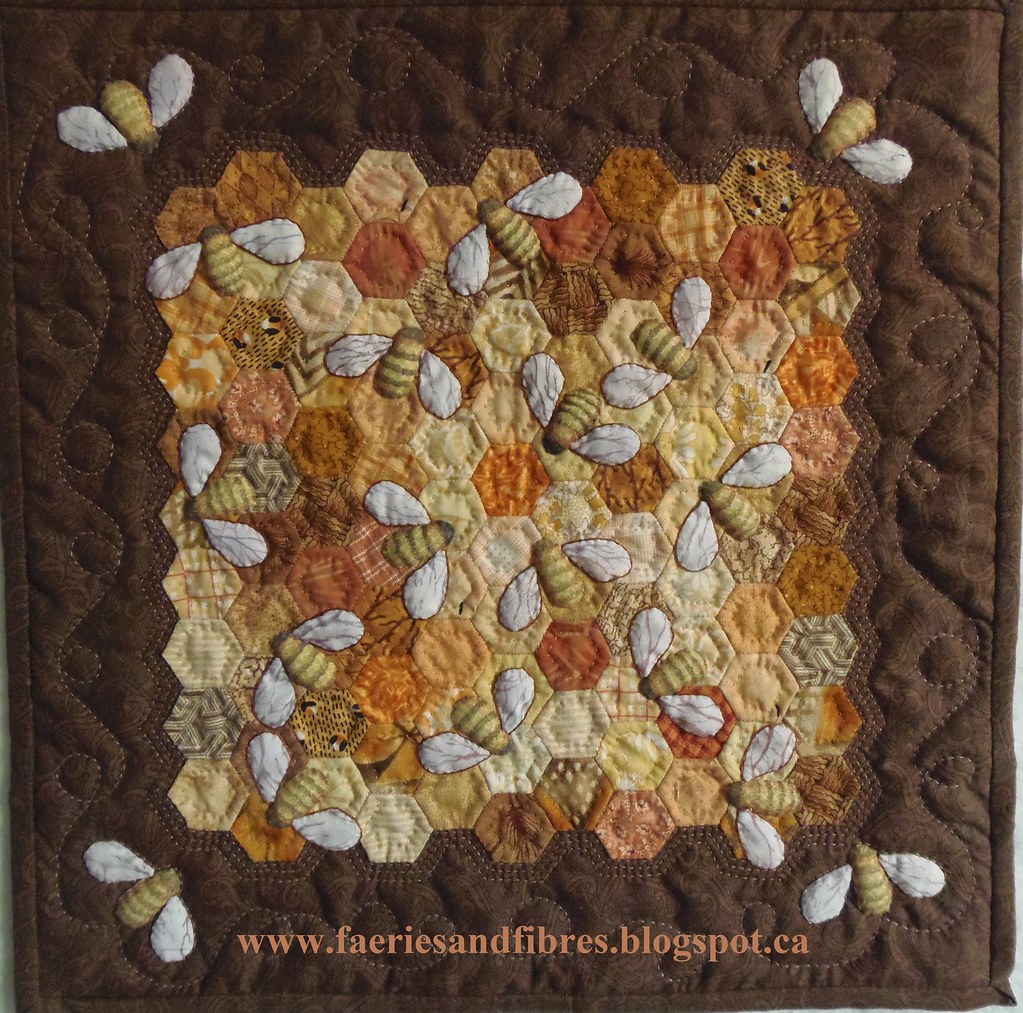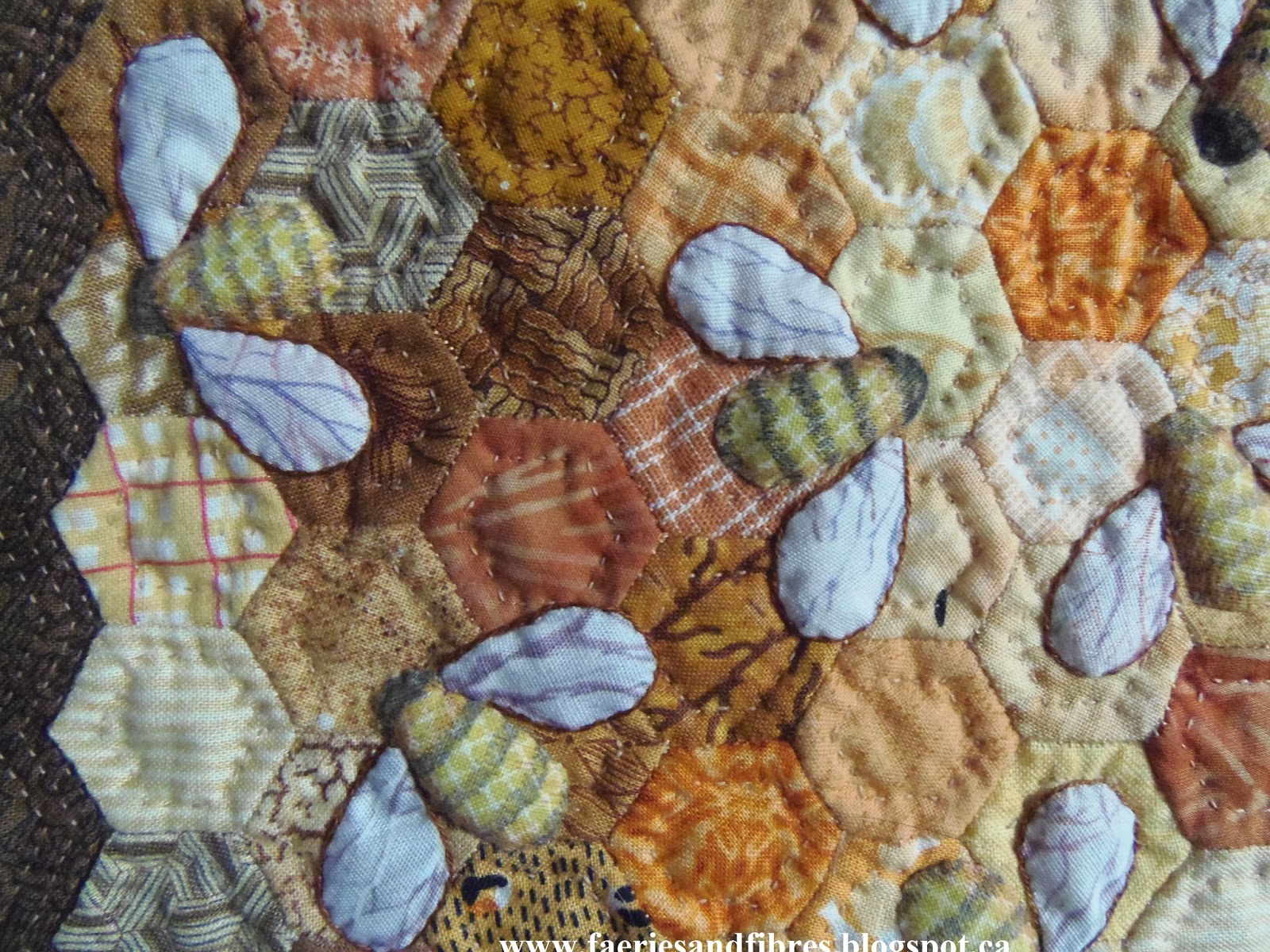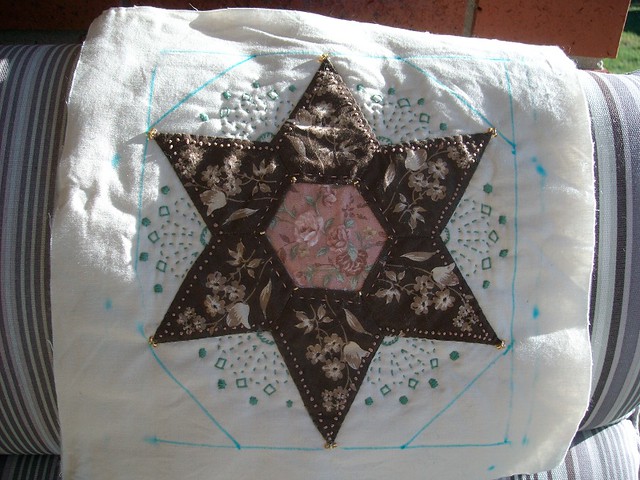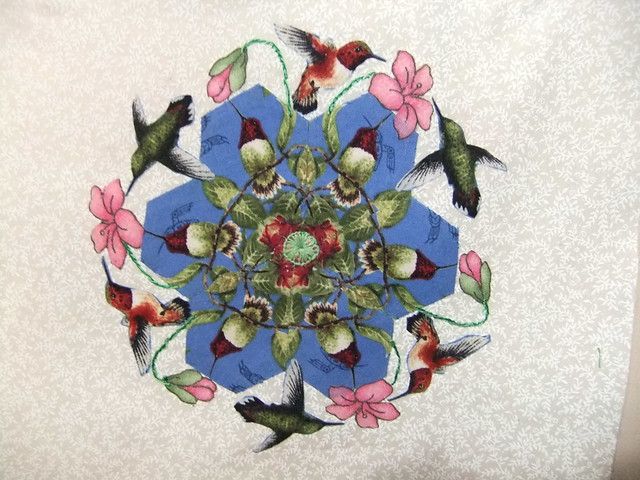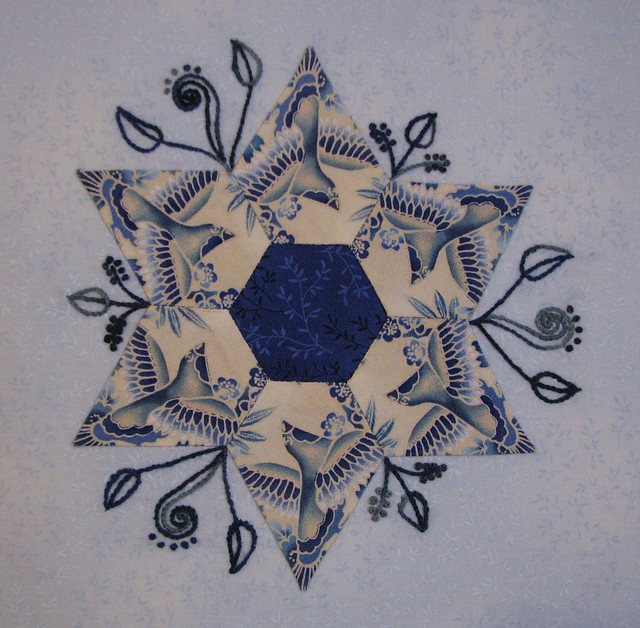Soupcon Quilt Along (QAL)
Part 3 of 6
Welcome to Step 3 of my Soupcon QAL. If you missed Step 1 you will find it here and Step 2 is here. Step 3 won't take much time at all. I expect you can complete it in a couple of hours! You will need two fabrics, one for a ring that will surround your block and a second for your background. For me that is where I spent most of my time, selecting the fabrics!
In Step 1 I had told you that you could use a large print like this one and that if you did you would start your quilt at Step 3. So if that's you it is time to pull out that large, lovely print! If you made a hexagon star or flower this doesn't apply to you!
Cut a 10 1/2" square of fabric. Be sure that your motif will fit inside a 8" circle. I like to give my fabric a spritz of starch and a good press. You are now ready to join those of us who are using a hexagon or star for our center medallion!
This is what your block will look like when Step 3 is finished. We will add the ring around our hexagon masterpiece and then applique the entire unit to a background fabric!
In Step 1 I had told you that you could use a large print like this one and that if you did you would start your quilt at Step 3. So if that's you it is time to pull out that large, lovely print! If you made a hexagon star or flower this doesn't apply to you!
Cut a 10 1/2" square of fabric. Be sure that your motif will fit inside a 8" circle. I like to give my fabric a spritz of starch and a good press. You are now ready to join those of us who are using a hexagon or star for our center medallion!
The Ring
To make the ring you will need a 10 1/2" square of fabric. Give the fabric a spritz of starch and give it a nice press with a hot, dry iron.
There are two ways to mark your fabric to make the ring. I have made a template that is one half of the ring and you will find it here. You can use this template to draw your ring on the fabric OR you can make the ring the way I did. You will need a compass that can open up enough so that the space between the needle point and the lead measures 4 3/4". Fold the 10 1/2" square in half and then in half again. Give the folds a light press so that they are clearly visible. Tape the square to a cutting mat.
Position the needle point in the center of the fabric where the two folds cross. Draw a circle. Open up the compass so that the distance between the needle point and the lead is now 4 3/4". Position the needle point in the center of the fabric. Draw your second circle.
The pencil lines from my compass were faint so I used my Frixion pen to draw on top of the pencil lines. These lines represent the finished size of the ring. HELPFUL TIP for TROUBLE SHOOTING: If your embroidery strays into the area of the ring, simply increase the size of the inner ring. If you set the compass and 4 1/4" it will give you an opening of 8 1/2". You will also need to adjust the size of the outer ring. Instead of setting the compass at 4 3/4" you will need to set it at 5"
Once you have drawn the circles on your fabric, make registration marks on the ring with fabric safe marker at the each of the fold lines. These marks will be used to line up the ring on the hexagon block. Cut out the excess fabric on the inside of the ring being sure to leave at least a 1/4" seam allowance.
Clip all the way around the circle making sure that your clip marks are a couple of threads shy of the pencil line. My clips were about 1/4" apart.
I like to finger press to turn under the seam allowance first and then baste it with thread. HELPFUL TIP: When finger pressing pinch the fabric. Release, move your fingers over a little and pinch again. Do not drag or slide your fingers along because you will distort the fabric and it won't lay flat. If you prepared your fabric with a little spray starch it will help give you a nice crisp crease when you finger press.
Clip all the way around the circle making sure that your clip marks are a couple of threads shy of the pencil line. My clips were about 1/4" apart.
I like to finger press to turn under the seam allowance first and then baste it with thread. HELPFUL TIP: When finger pressing pinch the fabric. Release, move your fingers over a little and pinch again. Do not drag or slide your fingers along because you will distort the fabric and it won't lay flat. If you prepared your fabric with a little spray starch it will help give you a nice crisp crease when you finger press.
Give your hexagon block a spritz of starch and press with a hot, dry iron. Locate the center point at the top and bottom and sides.
I placed a flower head pins at each of the points.
I placed a flower head pins at each of the points.
Line up the registration marks on the ring with the pins on the hexagon block. Pin at each of the four points. Smooth out the ring fabric and pin all around the inside circle of the ring.
Applique the inside edge of the ring to the hexagon block. You can applique by hand or machine. It is up to you.
HELPFUL TIP: Save all of your scraps that were trimmed because you might want to use them in future steps. By repeating those fabrics in other parts of the quilt gives it a cohesiveness even though it is a scrap quilt.
DESIGN OPTION: You could stop right here. Make multiple blocks and sew them together for a quilt! I think it would make a stunning quilt. This would be a great way for Nellie to use all those lovely black and white modified hexagon blocks that she made! Jean also made a lot of blocks which could be turned into a quilt. Before you decide, why not finish reading the instructions to see if you would like to carry on!
The final step for the ring is to trim the excess fabric from the outer edge being sure to leave at least a 1/4" seam allowance. I like to turn under the seam allowance and finger press before I baste it under.
When I baste the outer curve I take very small basting stitches because I find that I get a nice smooth curve. If I take larger stitches little pleats form and those pleats look like points from the right side. HELPFUL TIP: If you do get a pleat paint a little starch on just that spot, smooth out the pleat with your fingers so that the curve is smooth and then press with the tip of a hot iron. Don't burn those fingers because you still need them for a little hand sewing!
The Background
Once you've selected your fabric you are going to need to cut a square. The size of square you need is 12 1/2" HOWEVER I cut a 13" square, gave it a spritz of starch and pressed it with a hot dry iron. I then trimmed it to 12 1/2". Once trimmed to size I folded the square in half and then in half the other way.
Place the hexagon with the ring on the background fabric and line up the registration marks on the ring with the folds on the background fabric. Pin well with applique pins or thread baste the ring to the background Applique the ring to the background using your preferred method.
DESIGN OPTION: If you like what we've done so far why not make a quilt entirely of these blocks? You can embellish with embroidery or not - your quilt, your choice! Wouldn't it be fun to make a quilt of these blocks and then applique a small hexagon motif on the intersections where the blocks meet? As always, let the creative juices flow!
That's it for Step 3! I hope you are enjoying making your blocks as much as I enjoy seeing them. Don't forget to post your pictures on the Soupcon FLICKR Group and while you are there be sure to check out what everyone is doing! Step 4 will be released on February 14. I'll be challenging you to try something you might not have tried before so I hope you will give it a go. If you think it is too challenging I'll be sure to provide you with some design options! Our Soupcon quilts are going to start to grow!
Also for all you hexie-aholics it is hexie Friday over at A Quilting Readers Garden so don't forget to pop in for a visit to see what others are doing!
Until I post again, happy sewing!
Karen H
Also for all you hexie-aholics it is hexie Friday over at A Quilting Readers Garden so don't forget to pop in for a visit to see what others are doing!
Until I post again, happy sewing!
Karen H
























